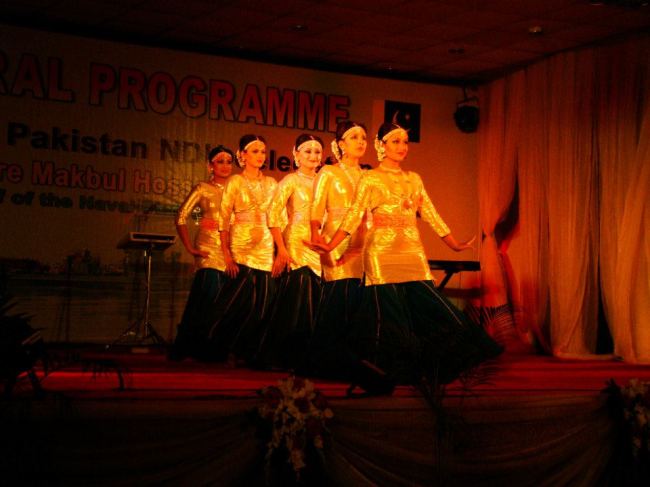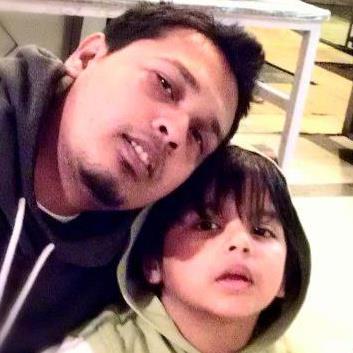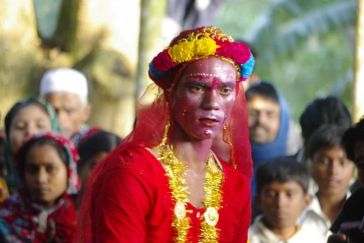
A male dancer as Manasa, the Hindu deity in a famous performance called “Manasa Mangal”
Gender & Performing Arts
The concept of performing alternative gender has been a crucial part of the cultural arts all over the world. Women were not allowed to perform openly in the past and therefore men had to portray female characters in public performances. In Bangladesh, similar consequence is seen in a vast traditional canvas for ages till date. The then, male dancers were often titled as “Princess” or by similar terms. Nowadays, despite of female practicing dance, many males across regions has continued the tradition of performing alternative gender as integrated part of their lives. They are the “Princess” of the era.
Performance is not gender dependent. But, the bigger point lies in the internal state of performer’s mind, body & perception. In course of performance, different layers of emotional spaces are created through frequent transition of reality and act. This on and off personality spell transforms a performer beyond gender and liminal boundaries. Is this a part of grammar to enact fiction? Or it stems from passion for the art?
According to Fiona Shaw, the classical actress & theatre director, “Both gender and its experiments along with performance are all merely metaphors for the unknown” [2002]. However, gender and performance are always treated as open ends: concepts to be explored with reference to history, with reference to the critical reactions and roles of spectators, the responses and interpretations of each viewer. Therefore, the feelings of the Princesses come out as their expressions and his bond with viewers defines the gender roles in the performance.
In present times, the credibility of an artist performing alternative gender is being questioned. Thus making it difficult to accept the age-old tradition. The Princess’s passion for his craft or his expertise in becoming the other turns fiction into perceived reality.
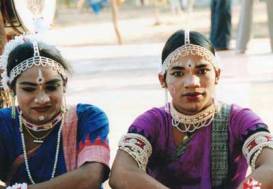 History across Bengal & belts
History across Bengal & belts
From the early stages of cultural practices, presence of women participation along with men is found in evidential history in all forms of art. Especially in dance and music, women as characters and performers are notably seen within ancient tales, stories and plays. The oldest verses written in pre modern Bengali, called Charyapada, a collection of 8th to 12th century Vajrayana Buddhist mystical poems, has several texts proclaiming women performing music or dance with their male companions. In earliest writings of Buddha play, there are texts about Nairatma Devi dancing and singing with her mate Bajracharya Binapada. This proves, how female were assimilated part of cultural activity in many oldest societies of the subcontinent. However, in the late middle ages, female performances were gradually bigoted and turned into a social stigma till early modern era. It was such stringent that women involved into performing arts were seen as disrepute in community. Thus came the need of performing alternative gender in continuing the long practiced cultural activities.
Men used to portray female characters in dance, plays and acts to perform a story socially and professionally. In Bangladesh, similar consequences have prevailed since cultural performances flourished and have been carried traditionally. Bengal being a thriving land for major primitive religions such as Hinduism, Buddhism and posterior Islam, has always been eloquence towards cultural practice. Major cultural customs are from folklore, which is either about the emotional experience of people’s livelihood or religious philosophy. From both perspectives, various female centric stories, legends and anecdotes have been the elements of performing arts in this region. Male dancers and actors customarily enacted most of these remarkable female characters of folklore for hundreds of years from now. Therefore, the concept of performing alternative gender has been embodied with fundamental characteristics of innumerable folk performances that it became a primary signifier of a huge part of the cultural dance heritage.
The then, these performers were often called as “Princess” or by similar nuances across range of localities in the towns and villages of Bengal. Nowadays, when women are widely taking part in all forms of cultural presentations, most of the local folk rituals and acts are only played by men as a crucial representation of the tradition. These male dancers are the Princess of this era and their performance factors, perspective of the ever-changing society and traditional experience is the focus of understanding tradition across Bengal & its belts. .
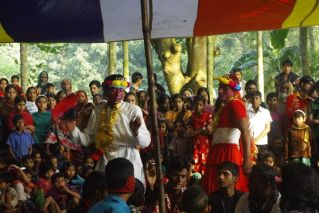
“Manasa Mangal” a famous Hindu tale is being performed in the village community
Performance is a creation of different spaces and experiences than reality. It is a fiction itself. Any performance is about presenting a form of man made thought. Which makes it an independent presentation structure. Therefore, it can be said, performance is not gender conditional. But in case of performing alternative gender, performance within a performance is created which gives a greater magnitude to perceive. Particularly when it is about the male performers of Bangladesh representing national folk tradition.
Firstly, it is very important to understand the reason and relevance of performing alternative gender in current social scenario to draw deeper insights into the performers mind. Traditional folk rituals like Gajir Jatra, Manasa Mangal, Kushan Jatra, Madan Pirer Gan, Pala Gan, Ghetu Nach etc are widely performed with Princesses across the nation within local communities. These are either unique ceremonials or part of a profound traditional ceremony in Bengal with huge community participation as viewers or performers. Generally, these male performers are normal men from the local neighborhood with family and village profession. They belong to the community as a typical man like others with similar prestige of patriarchy. But the interesting point is, that they learn and play female characters for beholding the tradition as the principal identity of these performances. There is many other secondary reasoning of performing alternative gender, which leads to comprehensive understanding of local heritage and the performer’s school of thoughts.
While performing as a woman, a man is not just playing a character but implementing a continuous bipolar experience for him and the audience. Playing a completely different gender within a story must be more than just stepping into a character shoe for a performer. In the process of transformation, he has to first step in an opposite zone of genital identity and then on the characteristics of the role in the story. While performing, continuous transition within layers of spaces occurs while presenting the personalities, emotions & physiognomies of the role. In many cases, like Pala Gan, a single performer plays all the characters of a play epitomizing male, female, neuters etc. The relation of a male performer as Princess with the audience is the main substance of the act and in many cases the distinctiveness of the act itself. Therefore, to understand the emotional experience and prerequisites of such performance which is beyond grammar and structure is a mystery for many.
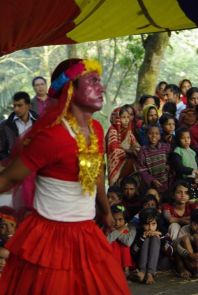
Arif, personally a stout male, mechanic by profession, is playing the role of Manasa in the famous play “Mansa Mangal”, a Hindu tale.
In Bangladesh, different prejudice and agenda has been developed around cultural practices among clusters of society. Commencing from the thoughts of women forbidden to dance, nowadays, men dancing as women are also seen as a social disgrace by many point of views. Some even relates it directly to queer society practice or acts from racist perception. As the credibility of an alternative gender performer has only succeeded within the traditional folk performances across rural localities, the gaze of such presentation in urban cultural practice has been somewhat alienated. Many mainstream platforms are reluctant to recognize performing alternative gender as an able competency whereas these princesses are the icons of our national cultural identity and a standard for accomplished folk performers internationally.
The alternative gender performance style is not only saving the tradition but also preserving a healthy environment for community cultural practice in pastoral society. It is helping people to enjoy the pure essence of creativity and be attentive to the story and characters rather than performers practical sexual attraction. The reality of a fake sexual portrayal is actually upholding audience from diverting their mind from pure artistic affection into mere physical attractions. It is also safeguarding the matter of public viewing with a community audience of all ages.
The ownership within regional communities will outgrow if conventional practitioners and mainstream veterans do not understand this performance style with its dimensions. This might cause a great loss of cultural treasure in future and result in deplorable representation of the ever-rich tradition of the subcontinent.
In ancient Greek theatre men played females, as they did in English Renaissance theatre and continue to do in Japanese Kabuki theatre. Now a day when cross-gender performances are being highly acclaimed and are counted as highest skill parameter for performers around the world, Bangladesh should take equal part in sharing the platform with the homegrown Princesses.
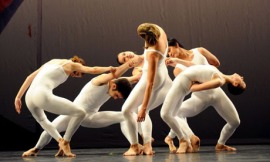 Perspective Worldwide
Perspective Worldwide
Critic Walter Terry noted an evolution in American dance that has required choreographers and dancers to go below the surface attraction of the human body in movement and probe the meanings of movements. “It follows that audiences are going to have to look beyond the outer layers of dance action if they are to savor, to the fullest, the inherent richness of dance itself” (1982,82)
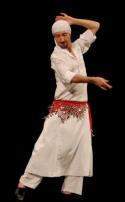 While talking about signs of identity, dominance defiance and desire in Dance, Sex and Gender, Judith Lynne Hanna signifies, “Even the denial of sexuality through, for example, costume, which hides sexual identity, may paradoxically make the spectator contemplate the essence of that which is absent. Dance can be understood as a medium through which choreographers/directors/producers interpret, legitimate, reproduce, and challenge gender and associated patterns of cooperation and conflict that order their social world.”(1988, 23)
While talking about signs of identity, dominance defiance and desire in Dance, Sex and Gender, Judith Lynne Hanna signifies, “Even the denial of sexuality through, for example, costume, which hides sexual identity, may paradoxically make the spectator contemplate the essence of that which is absent. Dance can be understood as a medium through which choreographers/directors/producers interpret, legitimate, reproduce, and challenge gender and associated patterns of cooperation and conflict that order their social world.”(1988, 23)
Anne Herrmann, Assistant professor of English and Women’s Studies at the University of Michigan says, the three plays I have chosen for comparison, Shakespeare’s As You Like It, Bertolt Brecht’s The God Woman of Setzuan, and Caryl Churchill’s Cloud Nine, use transvestism as a dramatic device to figure historicized form of social transgression. Such transgression never takes the form of travesty itself; that is cross-dressing as such is not coded as violation. Rather the vacillation between masculine and feminine serves as a metaphor for a particular social contradiction, the struggle between the natural and the unnatural, the good and the bad, sexuality as sinful and as political. In its historicized context, the conflict takes the form of two competing social formations: in Shakespeare the court and the forest, in Brecht socialism and capitalism, in Churchill hetero and homosexuality. (1989, 134)
References:
Dance, Sex, and Gender: Signs of Identity, Dominance, Defiance, and Desire by Judith Lynne Hanna, The University of Chicago Press, 1989
Travesty and Transgression: Transvestism in Shakespeare, Brecht, and Churchill by Anne Herrmann, The John Hopkins University Press, 1989
